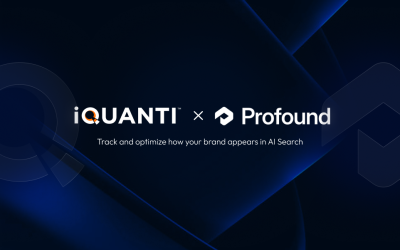By Wayne Cichanski
Hyperlocal search engine optimization is similar to enterprise SEO, but more focused. With hyperlocal SEO, the focus is on a region, state, city or even neighborhood. In conventional enterprise SEO, on the other hand, you are appealing to a broader audience.
One important element that enterprise and hyperlocal SEO share is the use of keywords and themes to guide strategy. In both types of SEO, you infer intent from the keywords that searchers use – although this intent will change depending on geography.
What Are the Benefits to Having a Hyperlocal Strategy?
There are benefits to developing a hyperlocal search plan beyond improved relevance. As a marketer, you can target more specific subsets of your audience. In addition, local search typically has high purchase intent. In other words, local searchers are the kinds of customers whose attention you want to be attracting.
Search engines have made local searches nearly foolproof. People typically utilize a primary keyword with a local modifier added, such as:
“wedding event center San Diego”
“sushi downtown Brooklyn”
“coffee near me”
In addition, for some terms Google has already defined the intent and will trigger an invisible local modifier. Try running a search for the following keywords – you will see that one triggers a local map pack and the other does not. Increasingly, Google is applying local intent automatically.
“payday loans” – the search engine results page (SERP) shows local results
“personal loans” – generates a normal SERP
How Do You Get Started in Hyperlocal Search?
- Understand which keywords automatically trigger local results and which of your primary keywords fit with a local modifier. Two steps are necessary at this stage.First, using a tool like SEMrush, overlay all of your target keywords to see which ones trigger a local map pack. Second, review and analyze your primary keywords and determine which ones would support a local modifier.
- Gain an understanding of your regional heat map. Where is your largest demand regionally? How does your revenue break down by state or city? Prioritize your SEO efforts based on demand by region, and the margin that you expect different kinds of customers to generate.
- Build a supporting architecture. You will need to expand your website’s architecture to support a local presence. This is represented by a tiered URL structure that includes nested subfolders.One example might be: httpss://domain.com/california/san-diego/wedding-event-centers. This tells Google that you have a location in San Diego, Calif. – thus increasing relevancy for anyone looking for a wedding event center in that city.
- Develop local pages to support relevancy factors. Now that you know which regions and products you are going to support with a hyperlocal focus, you must actually build web pages that will appear in local search results.Yes, this can seem daunting at first – but the rewards are worth the effort. Remember, you cannot have a database that spits out an address listing on a generic “Locations” page. This local buildout requires actual pages, with a unique URL structure AND unique content on each local page.
- Add schema markup to local pages. Schema helps web pages pass key information to search crawlers and allow the search engines to read and understand your pages more easily. There are several schema item types that can help: local phone numbers and local addresses are especially important for hyperlocal SEO.
- Claim your business in local directories. An important (and free!) step is claiming your local business listings – within both Google My Business and Bing Listings. This allows your business to be geotagged with your verified address. Search users who enter a keyword in which you have high relevancy, and are in the proximity of your verified listing, will have a strong chance of seeing your location in their results.
- Seek to gain positive reviews. Local services are often chosen with the help of user reviews. Those that Google collects are especially valuable from an SEO standpoint: If you have several positive reviews through Google’s local platform, your chances of appearing in the local map pack increase.If you wrap schema markup around the reviews, you will also see your star ratings appear on the SERP. This has proven to pull a higher click-through rate, even if it is in the second or third rank position.
Moving Beyond the Basics of Local Search
Can you insert your business in local search results even you do not have individual locations across the country? Yes – and if you’re more advanced with SEO, it may be worth pursuing.
Even if you don’t have verified business listings in different markets, you can leverage your own website to highlight individual locations. Take your primary keywords – those that produce a high volume of searches or result in an increased conversion rate – and add a local modifier to them. Then, create web pages optimized for these “localized” keywords.
Because it is relatively high-effort, this approach may make sense only for your most profitable markets. Still, by improving relevancy for local keywords, localized pages enhance SEO while also communicating to prospects that you are present in their neighborhood.
If successful, you will be able to drive more local traffic (with high purchase intent!) to your organic SERP links.




